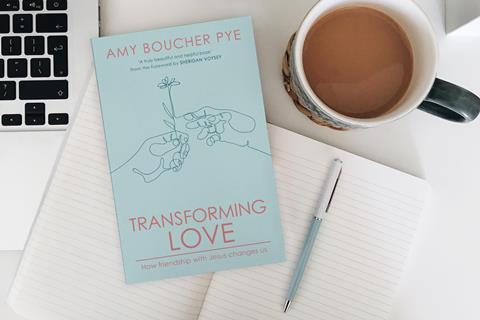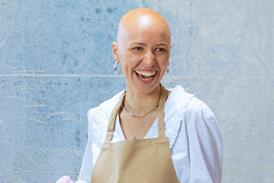Author Amy Boucher Pye explains why we shouldn’t fall into the trap of cultural typecasting of these famous biblical sisters.

“Are you a Mary or a Martha?” I respond with a smile, “Oh a Martha definitely. Like her, I affirm that Jesus is the Messiah.”
I hope my warmth and body language communicate a sense of playfulness, and that I haven’t alienated my friend who posed the question. But in my exploration of the three gospel stories about the beloved siblings from Bethany in my new book Transforming Love, I’ve learned that there’s so much more to these sisters than the roles that they have often been slotted into. And that we shouldn’t miss out their brother, Lazarus, either.
We learn from John’s gospel that Jesus “loved Martha and her sister and Lazarus” (John 11:5)—these were his close friends. They lived in Bethany, just two miles from the busy streets of Jerusalem, and he would appear on their doorstep when he needed rest and refreshment. He invited Mary to sit at his feet and learn from him; he welcomed both of the sisters to pour out their grief over their brother’s death; he counted the cost of raising Lazarus from the dead and brought him back to life anyway. He called the siblings to become fully the people God had created them to be, all through the foundation of their friendship with him.
Jesus doesn’t berate Martha but lovingly calls her to spend time with him.
But what about the tension between being and doing, of listening and serving, that we see in the story of Mary sitting at Jesus’ feet and Martha wanting Mary to help her in the kitchen? There we see Jesus calling Martha to the better way: “‘Martha, Martha,’ the Lord answered, ‘you are worried and upset about many things, but few things are needed—or indeed only one. Mary has chosen what is better, and it will not be taken away from her’ ” (Luke 10:41–42). Jesus doesn’t berate Martha but lovingly calls her to spend time with him. He knows that Mary chose the better way as she sits at his feet like a male disciple (only men were allowed this privilege at that time) and learns from him. So too does he invite us to receive from him today.
Read more on faith
I’m 17 and no one told me seeking God would be so hard but so worth it
We might harbour a bit of jealously over these beloved siblings—after all, they got to know Jesus face to face. But Jesus promised his friends that after he died, he would send the Spirit to be with them: “I will ask the Father, and he will give you another advocate to help you and be with you forever—the Spirit of truth. The world cannot accept him, because it neither sees him nor knows him. But you know him, for he lives with you and will be in you. I will not leave you as orphans; I will come to you.” (John 14:16–18).
Mary, Martha, and Lazarus got to know Jesus in person, but we have the Holy Spirit living with and in us! This amazing truth means that Jesus can change us from within, helping us to become more loving, to serve more freely, to not protect our own interests out of fear, to put the needs of others before our own. He will meet us lovingly when we’re exhausted, bringing us refreshment; he will affirm us when we’ve done a fabulous job on a project; he will help us to believe more fully in him, sharing with Martha the truth that he is the Messiah, the One who saves.
Jesus will meet us lovingly when we’re exhausted, bringing us refreshment
Friendship with Jesus truly changes us because we enjoy a day by day and moment by moment relationship with him. We can bring to him our fears and our disappointments; we can express to him our grief and our sorrows; we can share with him our accomplishments and our delights. He’s there to encourage us, comfort us, and affirm us. All because he loves us unceasingly and wants us to become more like him.
So if you’re tempted to follow a cultural typecasting of these sisters, I hope that you’ll smile and say: “Ah, I’m neither a Mary or a Martha. I’m [insert your name here]. I’m made in the image of God and I’m a friend of Jesus.”




































No comments yet